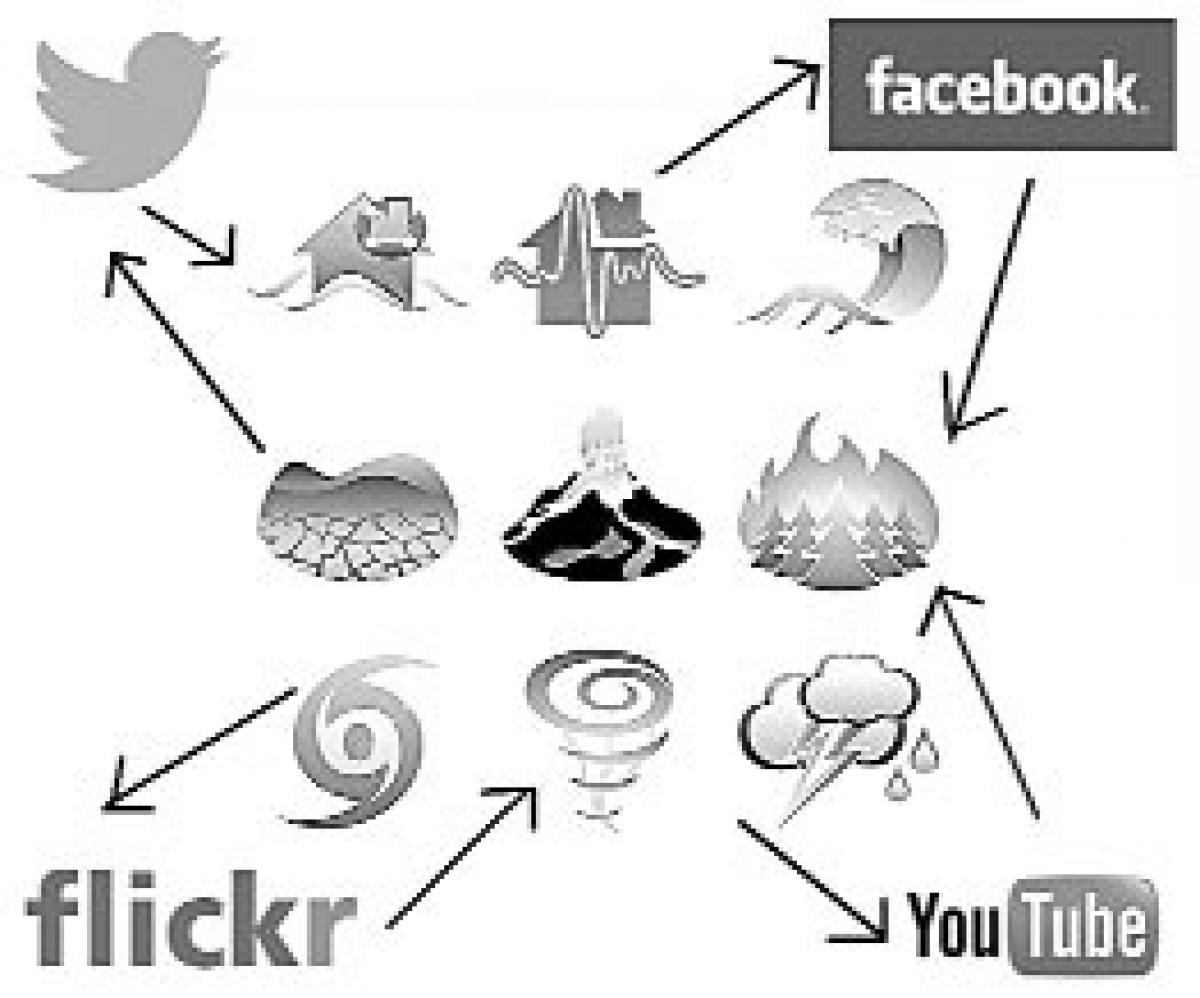Live
- US accounts for 18 per cent of Indian exports in FY24
- Will end Naxalism in Chhattisgarh by March 2026: Amit Shah
- Will gift one project daily to people during Jan Kalyan Parv
- Mahakumbh & the Politics of Sanatan Nationalism
- A Soulful Celebration of Global Music
- Brahmin Community delegation felicitates CM Saini
- Allu Arjun Visits Chiranjeevi’s House for Lunch Meet
- Toyota organising TG Grameena Mahotsav
- Special rituals conducted at Maramma Temple
- Siddaramaiah has special love for Muslims: BJP
Just In

Could social media be useful in tackling the challenges posed by natural calamities? The answer is yes, as a World Bank team, found out from the response elicited from the officials during the devastating Hudhud cyclone that struck Visakhapatnam on October 12, 2014.
- Unbelievable as it sounds, PWD officials created a WhatsApp group and that acted as the main tool of communication for sharing information during the devastating Hudhud cyclone that struck Visakhapatnam
- No meetings and discussions were organised at the district level as the WhatsApp group helped identify and access required resources
New Delhi: Could social media be useful in tackling the challenges posed by natural calamities? The answer is yes, as a World Bank team, found out from the response elicited from the officials during the devastating Hudhud cyclone that struck Visakhapatnam on October 12, 2014.
In its latest newsletter, the World Bank detailed the efforts in this chronicle. "On October 12, 2014, Hudhud cyclone, a category 4 cyclone with wind speeds exceeding 220 km/hour wreaked havoc on Visakhapatnam. The city, with a population of over 1.8 million people and neighbouring districts suffered massive devastation.
The World Bank’s South Asia Disaster Risk Management team jointly undertook a post-disaster damage and needs assessment with a team from the Asian Development Bank and with the government of Andhra Pradesh with the support of Global Facility for Disaster Reduction and Recovery.
During field visits, the assessment team interacted extensively with the community and local government officials. The one story that seemed to resonate consistently was the efficiency in clearing roads blocked by fallen trees and debris to make sure connectivity was restored at the earliest.
Following any major disaster, such as cyclone Hudhud, restoring connectivity is among the most challenging and critical activities. Restoring connectivity allows for more efficient flow of much-needed emergency relief, medical supplies and helps foster early recovery. We decided to dig deeper to find out what had been done differently here.
One evening, while returning from a field visit to Srikakulam district, we posed this question to V Ramachandra, Superintendent Engineer of Public Works Department (PWD), on what had been done differently. Ramachandra’s face lit up and he pulled out his smartphone. He showed us a “closed group” that the PWD engineers had created on WhatsApp.
For the first three days after Hudhud cyclone, there was no electricity and mobile connectivity. As the connections were restored, the PWD closed group became functional and that acted as the main tool of communication for sharing information. For any breach of road, the engineers shared information through WhatsApp group with a clear location and a short explanation of the problem.
The person responsible for the area responded with a message stating how long it would take to clear the block. Even requests for tools and JCBs were made on the group. This helped identify and access required resources. The action taken was narrated on the group discussion page once the problem was solved. An updated photo showing restored road connectivity was uploaded on the group.
No meetings and discussions were organised at the district level. The district magistrate joined the group and gave instructions to the department through the closed WhatsApp group. Most roads were functional within three to four days. The whole department worked to provide its services through a messaging system, without any meetings and formal orders.
Social media has become a part of our daily lives and is a very powerful tool for emergency management if used properly. Social media and pre-designed apps are effective when written reports and formal meetings are not required. During our current road to resilience mission we learned about the use of social media during the Chennai flooding last year.
The disaster management department still uses it for sharing information. It is important to learn from such experiences and institutionalise them for effective and efficient use during periods of early recovery and emergency response.

© 2024 Hyderabad Media House Limited/The Hans India. All rights reserved. Powered by hocalwire.com







